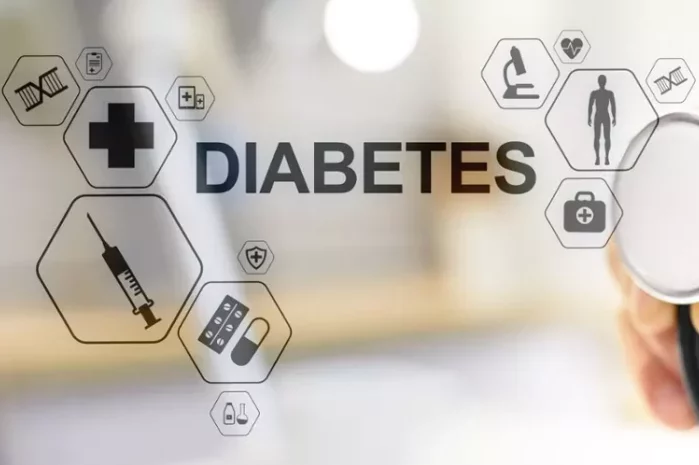Type 1 diabetes (T1D) is a chronic autoimmune disorder characterized by the destruction of insulin-producing beta cells in the pancreas, leading to insulin deficiency and dysregulation of blood glucose levels. While environmental factors play a role in triggering T1D, genetics also significantly contribute to the susceptibility of individuals to develop this condition. Among the various genetic factors implicated in T1D pathogenesis, specific gene mutations have been identified as key players in predisposing individuals to the development of this disease. In this comprehensive article, we delve into the intricate world of genetics to explore the gene mutation that underlies the onset of Type 1 diabetes.
The Genetic Landscape of Type 1 Diabetes
Before delving into the specific gene mutations associated with T1D, it is essential to grasp the broader genetic landscape of this disease. T1D is considered a complex genetic disorder, meaning that multiple genetic factors interact with each other and with environmental triggers to influence disease susceptibility. The genetic predisposition to T1D involves a combination of genes located on different chromosomes, with the Human Leukocyte Antigen (HLA) region on chromosome 6 being the most prominent genetic determinant.
The HLA Region: The Major Genetic Susceptibility Locus
The HLA region harbors a cluster of genes that encode proteins involved in the regulation of the immune system, particularly the major histocompatibility complex (MHC) molecules. These molecules play a crucial role in presenting antigens to the immune system, thereby modulating immune responses. Among the genes within the HLA region, certain variants of the HLA class II genes, specifically HLA-DR and HLA-DQ, have been strongly associated with T1D susceptibility.
HLA Class II Genes: HLA-DR and HLA-DQ
Variants of the HLA-DR and HLA-DQ genes are known to influence the presentation of autoantigens to T cells, thereby shaping the immune response towards pancreatic beta cells. In particular, specific allelic variants of HLA-DRB1 and HLA-DQB1 genes have been implicated in T1D susceptibility. These variants are thought to alter the peptide-binding specificity of the HLA molecules, resulting in the presentation of pancreatic autoantigens to autoreactive T cells, which initiate the destruction of beta cells.
Beyond HLA: Non-HLA Genetic Factors
While variants in the HLA region confer the highest genetic risk for T1D, numerous non-HLA genes have also been identified as contributors to disease susceptibility. These non-HLA genes are involved in various immune-related pathways, such as T cell activation, cytokine signaling, and immune regulation. One of the most extensively studied non-HLA genes in T1D is the INS gene, which encodes insulin, the primary target of the autoimmune attack in T1D.
The INS Gene: A Key Player in T1D Pathogenesis
The INS gene, located on chromosome 11, encodes preproinsulin, the precursor of insulin. Variants within the INS gene, particularly in the region encoding the insulin peptide, have been associated with an increased risk of developing T1D. These variants are thought to influence the structure and function of insulin, leading to the generation of autoantibodies against insulin and the subsequent destruction of beta cells.
Insulin Autoimmunity: A Central Feature of T1D
In individuals predisposed to T1D due to genetic factors such as INS gene variants, the immune system mounts an autoimmune response against insulin. Autoantibodies targeting insulin, known as insulin autoantibodies (IAAs), are detectable in the serum of individuals at risk of developing T1D, often years before clinical onset. The presence of IAAs serves as a biomarker of beta cell autoimmunity and heralds the progression towards overt T1D.
Other Genetic Players in T1D Susceptibility
In addition to the HLA region and the INS gene, genome-wide association studies (GWAS) have identified numerous other genetic loci associated with T1D susceptibility. These loci encompass genes involved in various aspects of immune function, including antigen presentation, T cell activation, and cytokine signaling. Some notable non-HLA genetic loci implicated in T1D susceptibility include PTPN22, CTLA4, and IL2RA.
PTPN22: Regulating T Cell Signaling
The PTPN22 gene encodes a protein tyrosine phosphatase involved in the regulation of T cell receptor signaling. Variants of the PTPN22 gene have been associated with altered T cell activation thresholds, leading to dysregulated immune responses and increased susceptibility to autoimmune diseases, including T1D.
CTLA4: Modulating Immune Tolerance
CTLA4, also known as cytotoxic T-lymphocyte-associated protein 4, is a key negative regulator of T cell activation and immune tolerance. Variants of the CTLA4 gene have been linked to impaired regulatory T cell function and enhanced autoreactive T cell responses, contributing to the breakdown of immune tolerance and the development of autoimmune diseases like T1D.
IL2RA: Influencing T Cell Homeostasis
The IL2RA gene encodes the interleukin-2 receptor alpha chain, a component of the high-affinity IL-2 receptor complex expressed on activated T cells. Variants of the IL2RA gene have been associated with altered IL-2 signaling and impaired regulatory T cell function, predisposing individuals to autoimmune diseases such as T1D.
Conclusion
Type 1 diabetes is a multifactorial disease influenced by a complex interplay of genetic and environmental factors. While environmental triggers play a significant role in disease onset, genetic predisposition plays a crucial role in determining individual susceptibility to T1D. Specific gene mutations, particularly those within the HLA region and genes involved in immune function, have been identified as key contributors to T1D pathogenesis. Understanding the genetic basis of T1D not only sheds light on the underlying mechanisms of disease but also holds promise for the development of targeted therapies aimed at modulating immune responses and preserving beta cell function in individuals at risk of developing T1D. By unraveling the genetic mysteries of T1D, we move closer to personalized approaches for disease prevention and treatment, ultimately improving the lives of individuals living with this chronic autoimmune disorder.



























